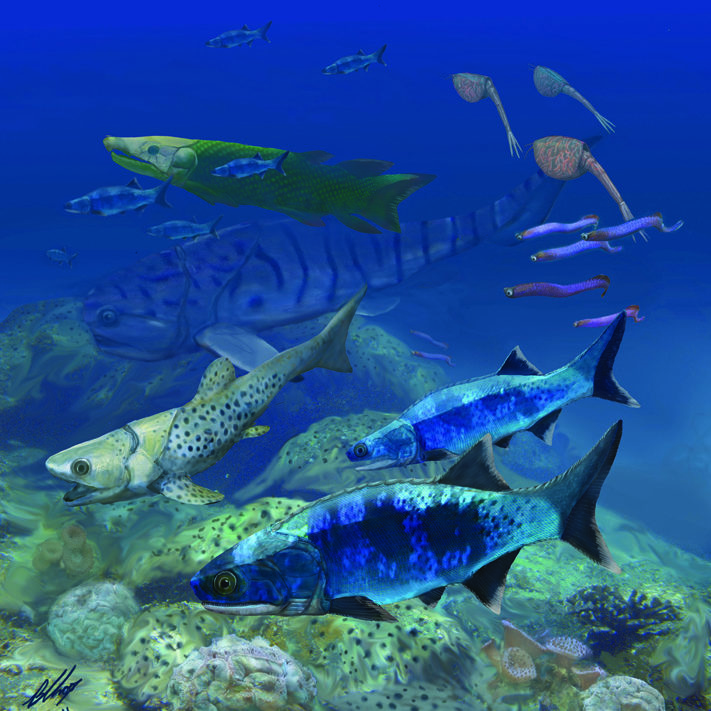Fish & early tetrapods
The earliest evidence of vertebrates come from early Cambrian deposits. Bony jawless fish achieved a worldwide distribution sometime during the Ordovician as evidenced from bone fragments and some of the first partially articulated fish fossils. The Silurian saw an explosion in diversity of jawless forms, as well as the first jawed fishes (gnathostomes).
However, it is the Devonian that is known as the “Age of Fishes” for the explosion of aquatic vertebrates, with many of the modern lineages tracing their origins back to this time. Placoderms and lobe-finned fish were abundant during the Devonian, but a faunal turnover after the Devonian extinctions saw a switch towards a rise in cartilaginous and ray-finned fish diversity instead that has persisted to today.
The largest group of ray-finned fish, the teleosts, as well as modern lineages of cartilaginous fishes such as sharks and rays originated during the Triassic-Jurassic Periods. Whereas other groups, such as the holocephalans, lungfish and coelacanths have origins stretching all the way back to the Devonian Period.
